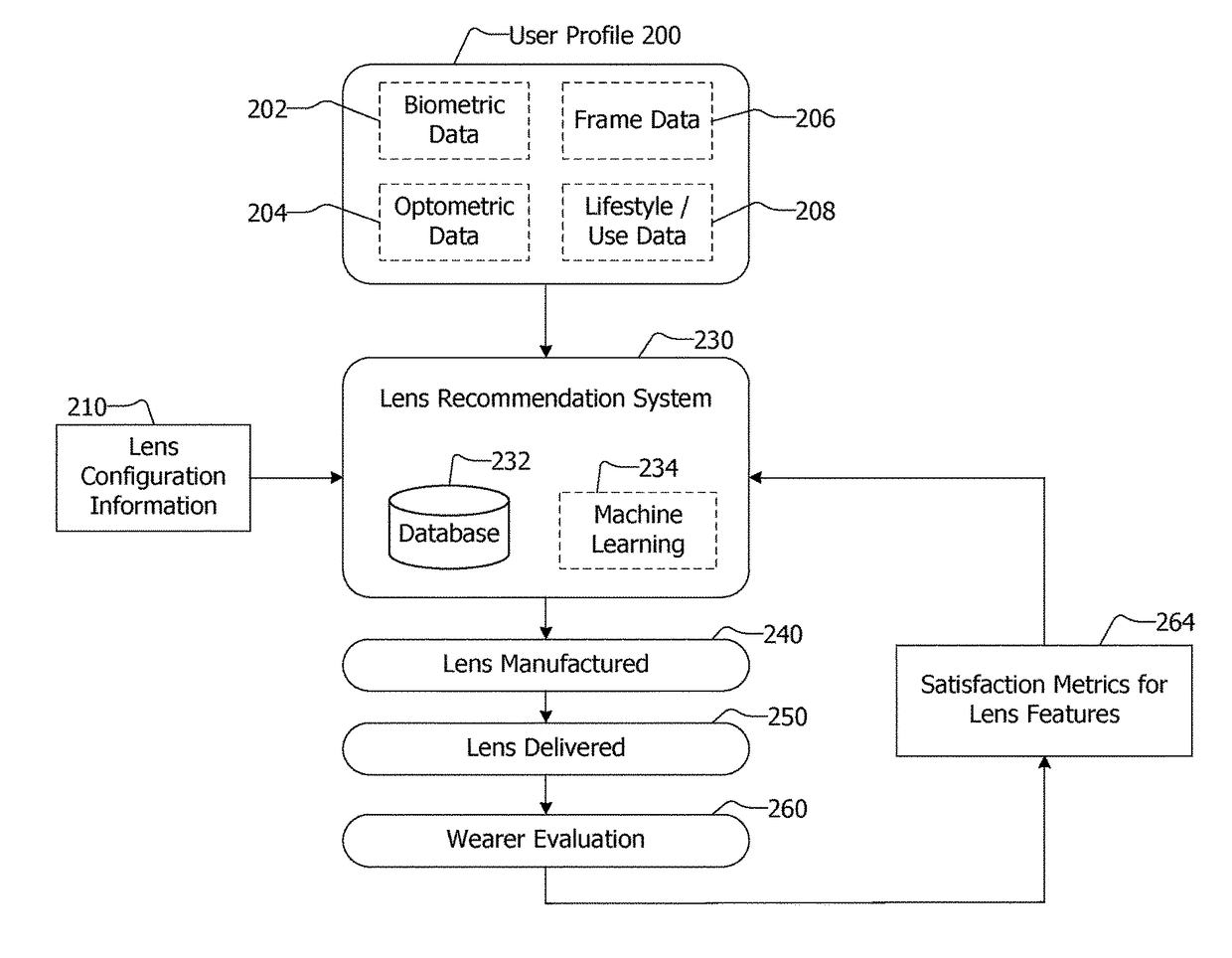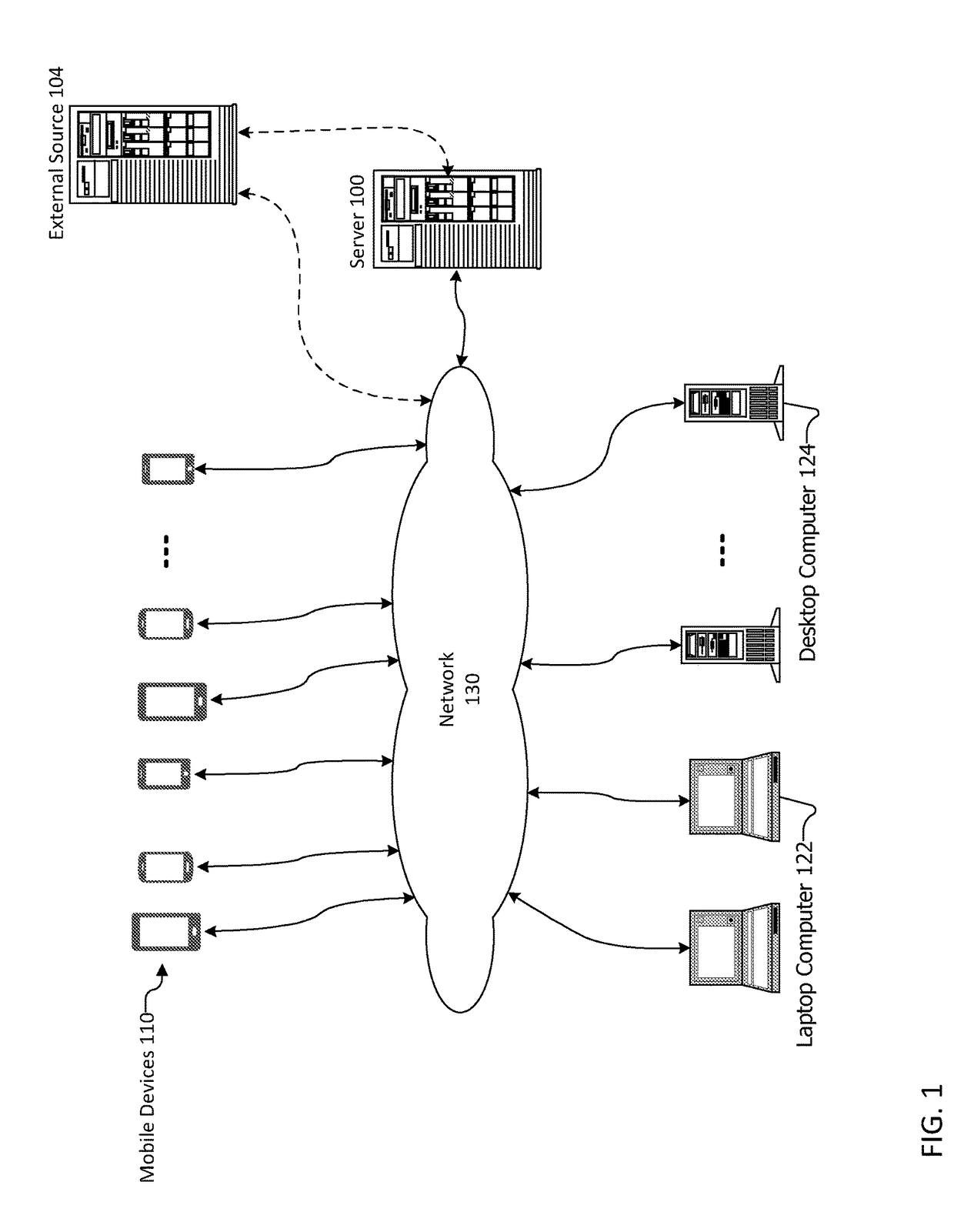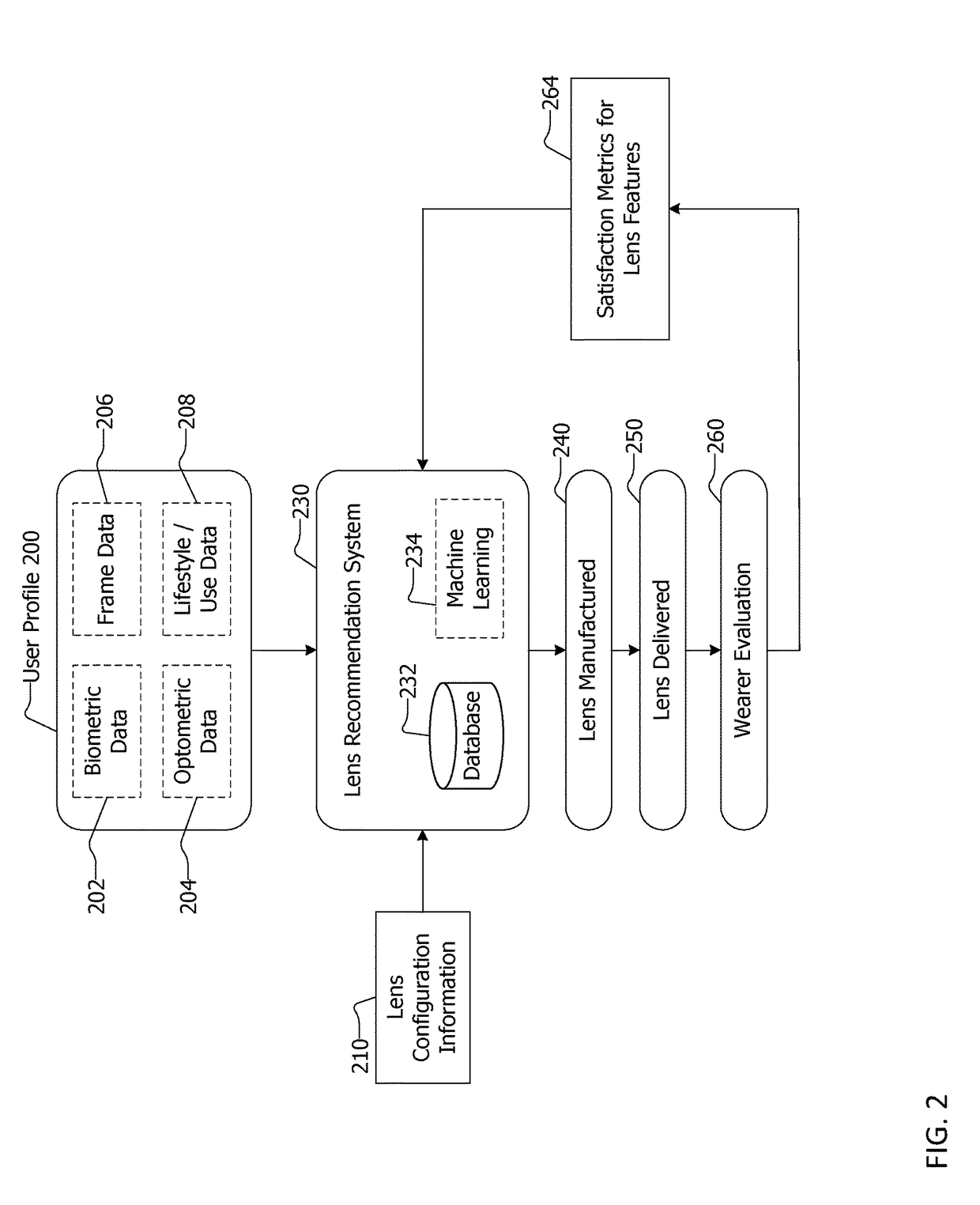Custom ophthalmic lens design derived from multiple data sources
a technology of ophthalmic lenses and data sources, applied in the field of custom ophthalmic lenses, can solve the problems of difficult optimization of ophthalmic lenses for a particular wearer, unpractical manufacturing of these lenses, and affecting the quality of ophthalmic lenses,
- Summary
- Abstract
- Description
- Claims
- Application Information
AI Technical Summary
Benefits of technology
Problems solved by technology
Method used
Image
Examples
Embodiment Construction
[0011]A method for the design of ophthalmic customized lenses based on information obtained from multiple sources and incorporating a machine-learning model is described herein. The information from multiple sources includes feedback from lens wearers and data about the particular lens customer. The machine-learning model adaptively generates rules to correlate user data with lens parameters. To prepare a prescribed lens for a new wearer, a system applying the method uses the generated rules to configure a lens in an effort to maximize the wearer's satisfaction.
[0012]Description of Apparatus
[0013]The methods described herein are typically implemented as software on one or more computer servers maintained by a lens manufacturer. In addition, the methods may include the creation of instructions for computer controlled manufacturing techniques and robotics used in manufacturing or producing contact lenses. The software that implements the methods described herein is stored on a machine...
PUM
 Login to View More
Login to View More Abstract
Description
Claims
Application Information
 Login to View More
Login to View More - R&D
- Intellectual Property
- Life Sciences
- Materials
- Tech Scout
- Unparalleled Data Quality
- Higher Quality Content
- 60% Fewer Hallucinations
Browse by: Latest US Patents, China's latest patents, Technical Efficacy Thesaurus, Application Domain, Technology Topic, Popular Technical Reports.
© 2025 PatSnap. All rights reserved.Legal|Privacy policy|Modern Slavery Act Transparency Statement|Sitemap|About US| Contact US: help@patsnap.com



